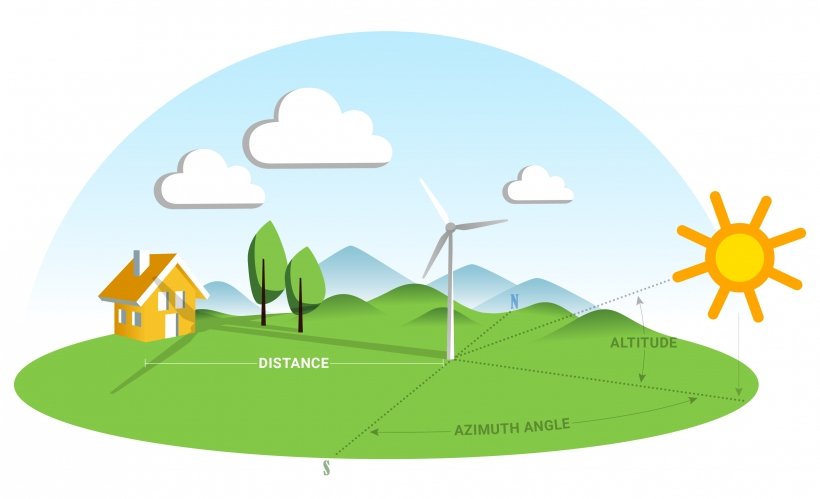We take pride in our ability to supply our customers with clean, renewable energy that will keep long-term costs down and improve the health of our environment. With that comes the responsibility to ensure our renewable projects are safe and reliable for everyone.
As we continue to develop and operate wind, solar and other renewable projects, we engage with landowners, community members and elected officials to understand their needs and concerns.
You may already know Alliant Energy is currently the third-largest utility owner-operator of regulated wind in the United States. One common concern we hear is about shadow flicker from turbines at our wind sites.
What is shadow flicker?
This is a phenomenon that happens when a wind turbine rotates between the sun and a landowner’s home and creates a flicker from the shadows of the turbine blades. Though most homes within a wind project footprint will not experience any shadow flicker, landowners closer to wind turbines may experience occasional flicker.
How does shadow flicker happen?
Shadow flicker is a rare occurrence and is more common around sunrise and sunset when the sun is closer to the horizon. The extent of how much shadow flicker a landowner experiences depends on the orientation of and distance between the house and wind turbine.
Given the phenomenon needs direct sunlight and turbine movement to appear, shadow flicker will not occur when fog or clouds block the sun or if blades are stationary.

Illustration by Resource Systems Group
How we mitigate shadow flicker
Proper project planning and siting drastically minimize the impact of shadow flicker. When we develop wind projects, we perform studies that give us information on site geography, weather, environmentally sensitive locations and dwellings in the area. This helps us identify where to place turbines safely and responsibly.
Sometimes siting requirements and project layout make it difficult to fully mitigate shadow flicker. If we identify that a landowner might experience shadow flicker, we work toward a solution together. In some cases, this can be as simple as planting vegetation to reduce or eliminate flicker.
Shadow flicker is not a health concern
According to a study by the Massachusetts Department of Environmental Protection, evidence suggests there is no risk of seizure from shadow flicker. The study also shows shadow flicker does not cause migraines, nausea, dizziness or disorientation.
With that said, we are always open to dialogue and meaningful conversations with community members who have concerns about our projects.
We are committed to being a good neighbor and partner to the communities we serve. To learn more about our wind projects, click here.


